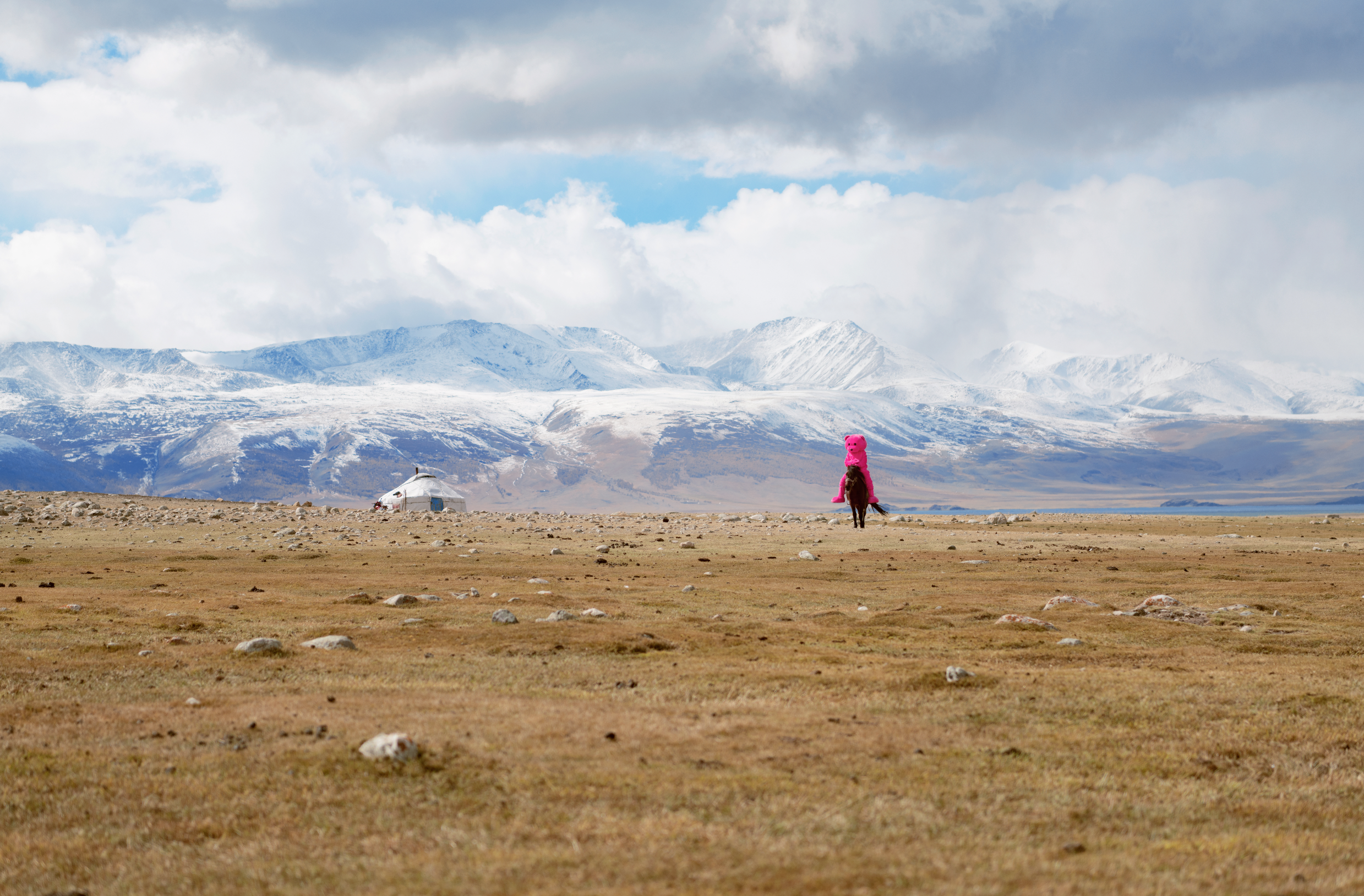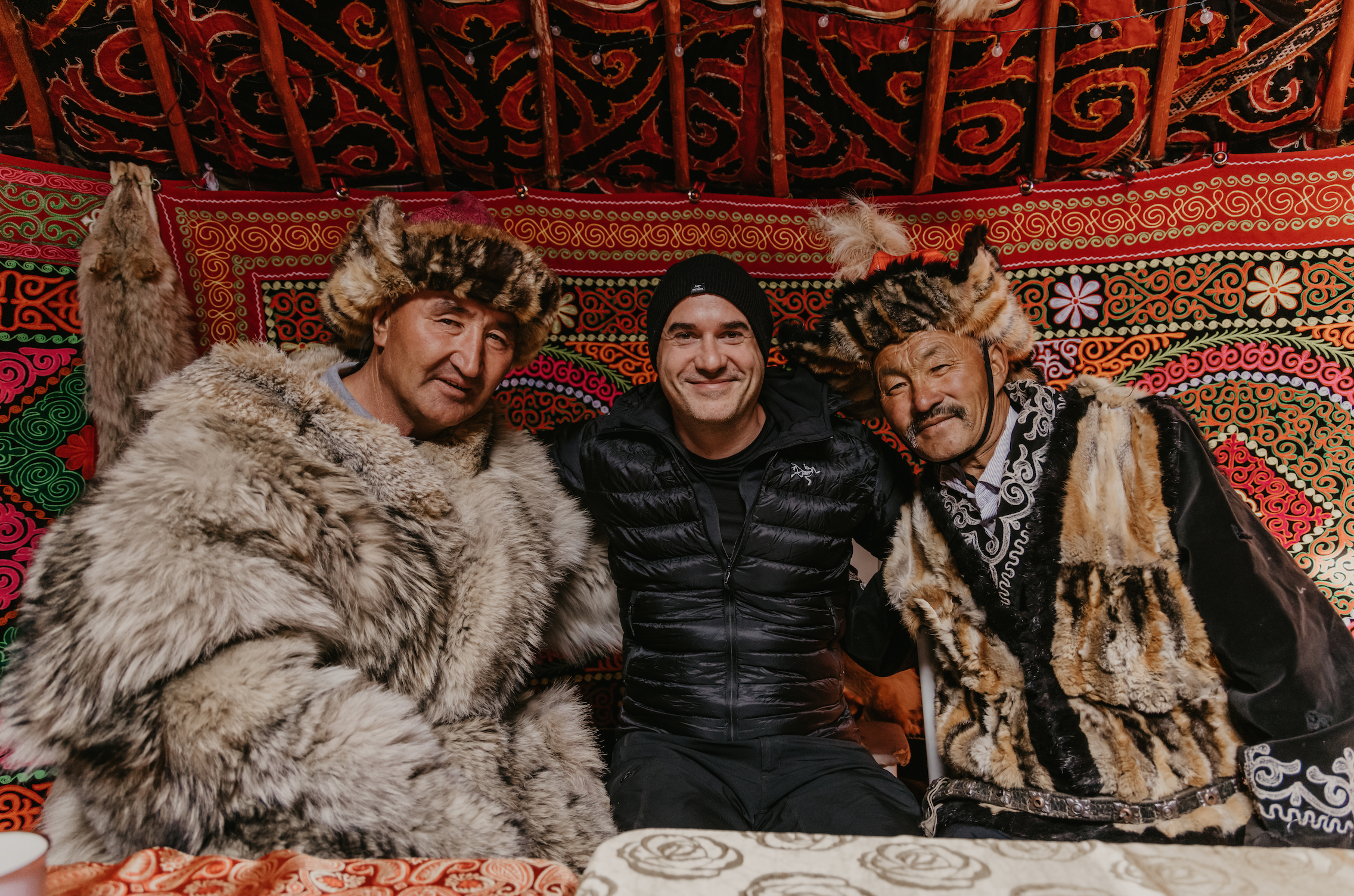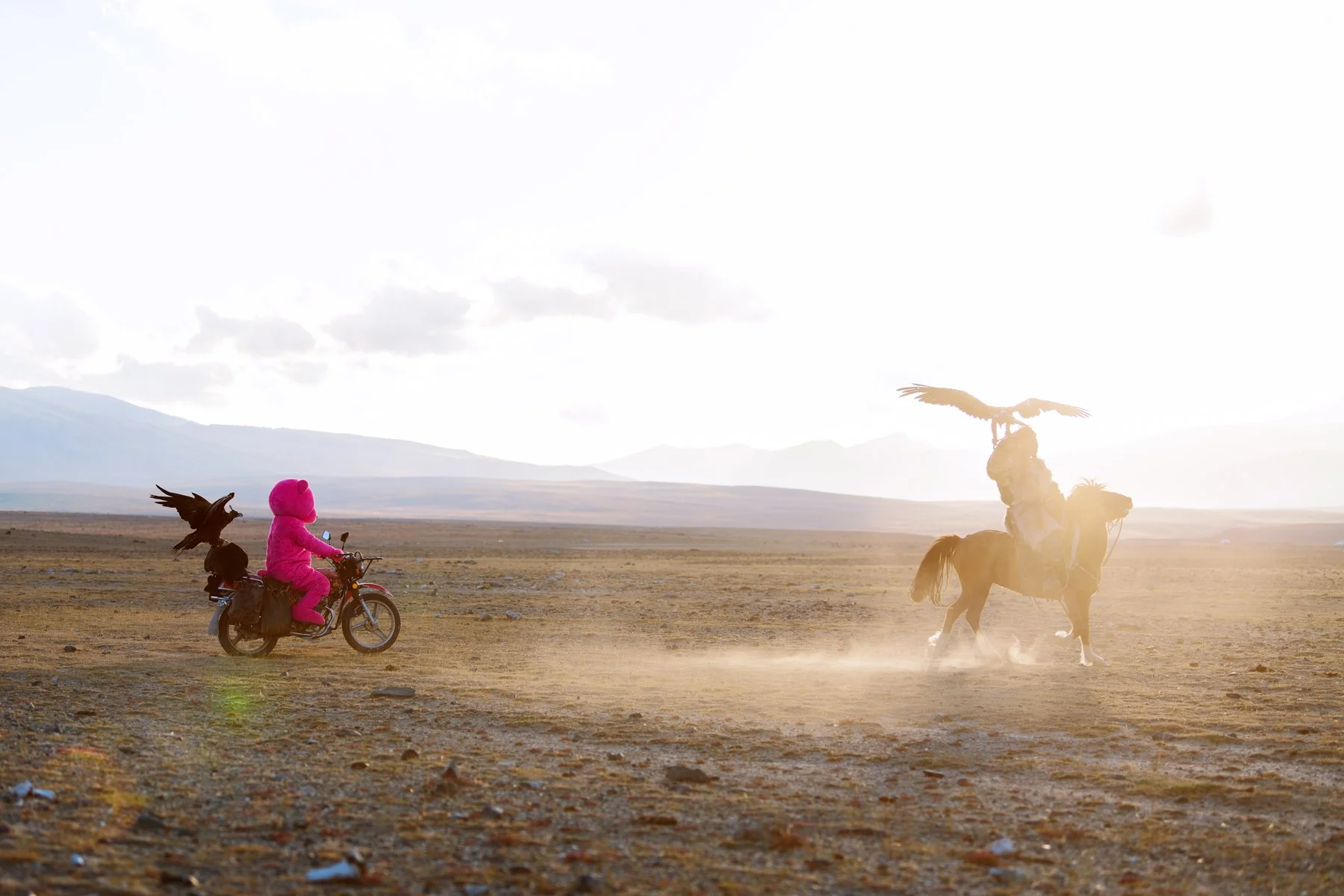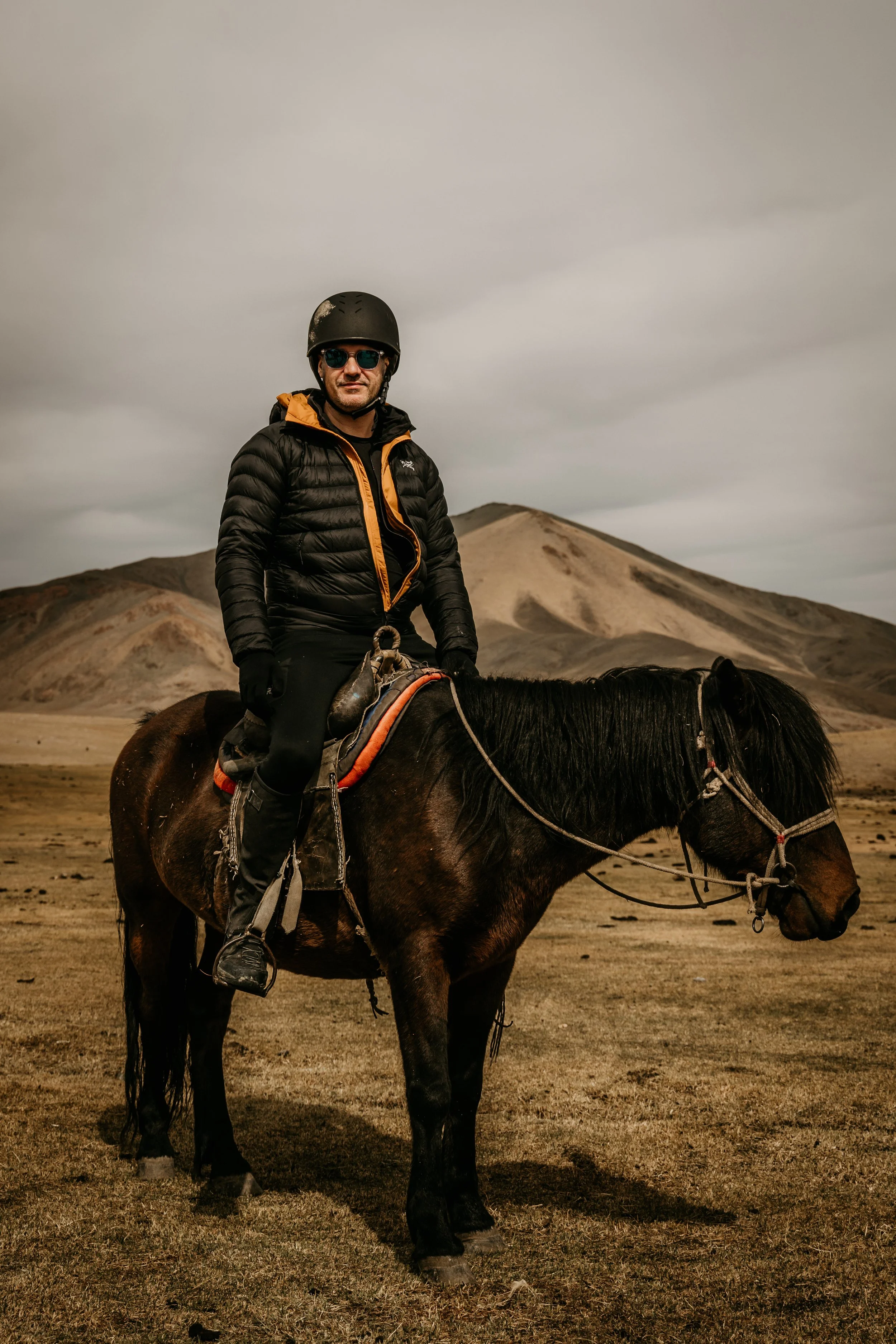Facing Fear in the Mongolian Wilderness
A ten-day expedition on horseback through Mongolia’s Altai becomes an unexpected reckoning with childhood fear, sub-zero extremes, and the silent weight of a disappearing world — with the Pink Bear riding alongside.
In September 2022, I travelled deep into the Altai region of western Mongolia, a remote and sparsely inhabited land where mountains roll into valleys and the wind never truly stops. For ten days I rode on horseback, creating new photographic artworks featuring the Pink Bear, my ever-present companion and symbol. But the journey became more than an expedition; it was a reckoning with fear, endurance and the profound silence of untamed space.
The idea had been brewing for three years, and with the invaluable assistance of Megan Hine, a seasoned British survival expert, my dream finally materialised. Megan, whom I now proudly call a friend, has tackled some of the planet's harshest environments, earning her stripes as a real-life action hero. Originally planned for 2020, the expedition was delayed first by the pandemic, then by continued travel restrictions. As 2022 arrived, new tensions made us reconsider again. The region lies near the Russian, Chinese and Kazakh borders, and we heard reports of Russian troops landing in Ulaanbaatar as part of joint military exercises. It almost stopped us. But this time, we pushed forward.
I had never been on a horse before training for this project. My fear dated back to childhood, when a horse charged me on a forest path. The memory lingered. I began training six months ahead of departure. I gave up alcohol, focused on fitness and took riding lessons. That first time in the saddle I was too afraid to stroke the horse, but I gave it my best shot as I knew I needed to overcome my fear. Practice dulled the edge of that fear. Eventually, I could ride with some confidence.
The journey began in Ulaanbaatar, where we arrived by plane. From there, we travelled to the location of the Eagle Festival, an extraordinary gathering where golden eagle hunters display their bond with these majestic birds. We met the eagle hunters, including the father of the famed eagle huntress. She was away studying, but her family welcomed us warmly.
We watched the festival unfold over two days—events included traditional archery, racing, and the symbolic ritual of the wife-husband whipping ceremony, performed on horseback. In the late afternoons, the golden light softened the landscape. I photographed the Pink Bear alongside the hunters and their eagles. One of the most memorable images from the trip came early, with the Bear perched on a motorbike, an eagle balanced behind it. In many of the villages we passed, motorbikes had begun to replace horses. Traditions were shifting. The Bear did not belong to either world.
In the evening, traditional music echoed across the camp and gradually gave way to Mongolian techno. A makeshift party formed under a vast canopy of stars. It was a vivid and deeply human moment—one that lingered with me. In that gathering, where time felt suspended, I saw how tradition and simplicity carry a kind of truth that modern life rarely offers. It was a rare glimpse into a way of life grounded by nature’s rhythm and shaped by resilience.
The following day, we travelled west to the start point of the main expedition. On arrival, a sudden snowstorm swept through, forcing us to postpone our departure. That evening, as the skies began to clear, we saddled up for a short practice ride. It was my first real experience of riding in Mongolia at canter and at speed. As we began the ascent of a rocky hill, I let out an involuntary yelp that echoed embarrassingly through the group. My nervousness was clear to everyone, but that brief and jarring moment signalled the beginning of a shift in confidence. Something had changed in me, however slightly.
The next morning, we set off properly. Bright sunshine followed us out, but by midday the snow returned. The weather became its own character on the journey: blazing sunshine one hour, flurries of snow the next. Each day brought terrain that challenged us. We climbed rocky slopes, crossed icy rivers and pressed on through light that shifted with the hour.
The days were long and physically relentless. In the evenings we set up tents, ate together and tried to stay warm. The temperature often dropped to -15°C. Each morning I would wake in a sleeping bag coated with frost. The skin of the sleeping bag itself froze overnight. One night I left my water bottle outside by mistake. By morning, it had turned solid. Another night, I woke in a panic, shouting. I had dreamt I was being dragged away in a sack, thrown onto a horse and taken. In truth, I was tangled in my sleeping bag, disoriented and freezing. It took time to calm down.
Despite the hardship, there was immense beauty. The copper hues of the steppe, the iron-rich soil, the vast silence that filled the air. In the evenings we hiked up hills overlooking the valleys we had crossed. There were no fences, no roads, no artificial light. Just space. One evening I photographed the Pink Bear beneath the stars, capturing the eerie stillness of nightfall. Another afternoon, while shooting beside a yurt, the family who lived there arrived. There was no need for words—the Bear transcended language. Children laughed, adults smiled, and we shared a few quiet moments of mutual recognition. In those pauses between movement, I watched the light change across the land. It was as though time itself slowed to let me see more clearly. The Pink Bear was there with me in every setting, appearing in photographs without explanation, observing the shifting balance of tradition and change.
We ended our journey by a remote lake, surrounded by stillness and a quality of light that seemed to hover just above the ground. As night fell, the sky revealed more stars than I thought possible, a silent tapestry of glinting points stretching to the horizon.
After days of travel on horseback, our bodies sore and minds quieted by the rhythm of the landscape, we returned by vehicle to catch our flight to Ulaanbaatar. The shift back to roads and engines felt disorientating. The stillness I had grown used to—the cadence of sunrise and sunset, the hush of wind through the valleys, the sound of hooves on earth—was abruptly replaced by the hum of traffic and the blur of schedules. It disrupted something fragile. There had been clarity and peace in the wilderness, living moment by moment, immersed in silence and space. It showed me just how far modern life has drifted from the rhythms we once lived by. That disconnection felt more visible than ever.
This was not an easy journey. It tested every part of me. But it brought clarity. It showed me how closely creativity sits beside fear, how art can be a form of endurance, and how the Pink Bear continues to evolve with me. This character that began as a childhood memory reclaimed in therapy now stands quietly at the centre of my practice, present in every landscape, watching, reflecting.
The Pink Bear, as always, served as a beacon of joy, eliciting smiles from locals and inspiring impromptu photoshoots against the backdrop of Mongolia's remote landscapes. In a world beset by change, these moments of connection and creativity serve as timeless reminders of the beauty that surrounds us.






